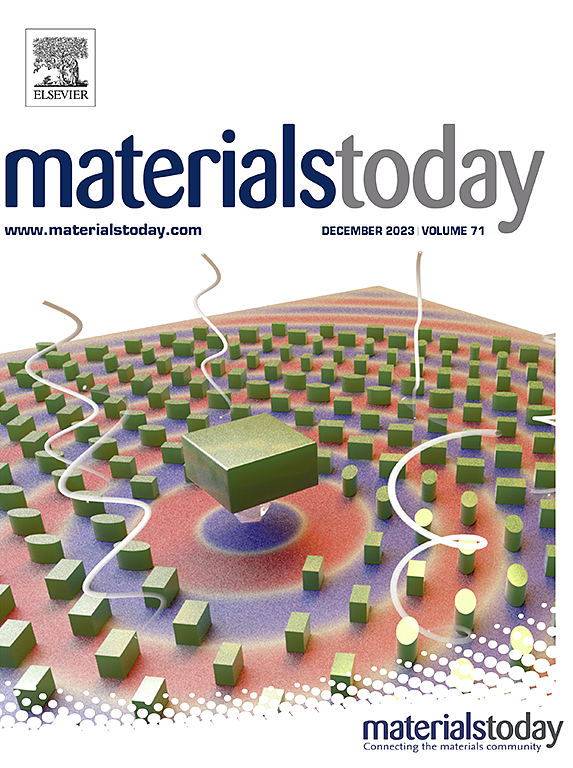合成石墨烯和二维材料中的皱纹形成
IF 21.1
1区 材料科学
Q1 MATERIALS SCIENCE, MULTIDISCIPLINARY
引用次数: 0
摘要
化学气相沉积(CVD)被广泛用于以低成本生产高质量、大面积的石墨烯和二维(2D)材料,由于其独特的物理性质,使其适用于机械、电子和光子器件的广泛应用。然而,当衬底上的生长材料从生长温度冷却到室温时,由于材料与衬底之间的热膨胀系数(CTE)的差异,通常会形成皱纹,从而显着降低器件性能。在这篇综述中,我们首先讨论了在衬底上常见的石墨烯和二维材料的几种典型表面波纹,包括轻微的、直立的、接触的和躺着的皱纹,以及皱纹网络。然后,我们引入了一个确定无褶皱状态的准则,即由CTE失配获得的总压缩应变等于褶皱释放的应变和残余应变的总和,这可以分别从褶皱的形貌和拉曼光谱中推断出来。基于这一标准,我们回顾了在合成无皱石墨烯方面的几个值得注意的努力,并最终回答了丢失的压缩应变去哪里的问题。我们的目的是通过这篇综述,让读者对皱纹形成的机制有一个全面的了解,并激发对无皱纹二维材料合成的进一步探索。本文章由计算机程序翻译,如有差异,请以英文原文为准。

Wrinkle formation in synthesized graphene and 2D materials
Chemical vapor deposition (CVD) is widely used to produce high-quality, large-area graphene and two-dimensional (2D) materials at low cost, making them suitable for a wide range of applications in mechanical, electronic and photonic devices due to their unique physical properties. However, wrinkles always form when the as-grown materials on the substrate cool from the growth temperature to room temperature because of the difference in the coefficient of thermal expansion (CTE) between the materials and the substrates, significantly degrading device performance. In this review, we first discuss several typical surface corrugations of graphene and 2D materials that are commonly observed on a substrate, including minor, standing, contacted and lying wrinkles, as well as wrinkle networks. We then introduce a criterion to ascertain the wrinkle-free state by equating the total compressive strain obtained from CTE mismatch to the sum of the strain released by the wrinkles and the residual strain, which can be deduced from the morphology of wrinkles and Raman spectroscopy, respectively. Based on this criterion, we review several notable endeavors in the synthesis of wrinkle-free graphene and finally answer the question of where the lost compressive strain goes. We aim that this review provides readers with a thorough understanding of the mechanism underlying wrinkle formation and stimulates further exploration into the synthesis of wrinkle-free 2D materials.
求助全文
通过发布文献求助,成功后即可免费获取论文全文。
去求助
来源期刊

Materials Today
工程技术-材料科学:综合
CiteScore
36.30
自引率
1.20%
发文量
237
审稿时长
23 days
期刊介绍:
Materials Today is the leading journal in the Materials Today family, focusing on the latest and most impactful work in the materials science community. With a reputation for excellence in news and reviews, the journal has now expanded its coverage to include original research and aims to be at the forefront of the field.
We welcome comprehensive articles, short communications, and review articles from established leaders in the rapidly evolving fields of materials science and related disciplines. We strive to provide authors with rigorous peer review, fast publication, and maximum exposure for their work. While we only accept the most significant manuscripts, our speedy evaluation process ensures that there are no unnecessary publication delays.
 求助内容:
求助内容: 应助结果提醒方式:
应助结果提醒方式:


